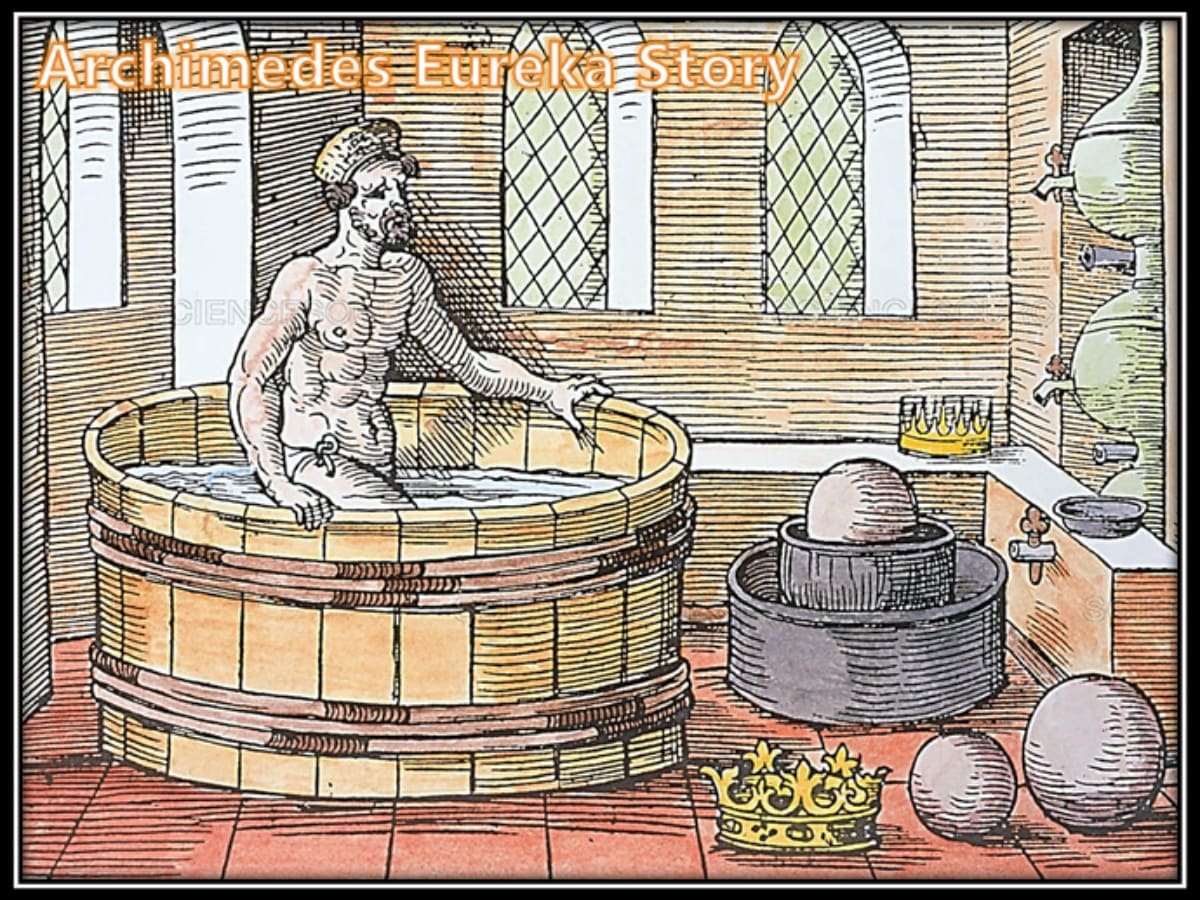Archimedes Principle:
In History of Physics, this Archimedes’ Eureka story is called the Archimedes Principle of Golden crown, which states that “when a body is immersed in a liquid, it experiences an upward buoyant force, which is equal to the weight of the liquid displaced by the body“.
If a glass is filled to the top with water and then ice cubes are added to it, what happens? Just like the water spilled over the edge when Archimedes entered his bathtub, the water in the glass will spill over when ice cubes are added to it. If the water that spilled out were weighed (weight is a downward force), it would equal the upward (buoyant) force on the object. From the buoyant force, the volume or average density of the object can be determined.
Archimedes was able to determine that the crown was not pure gold due to the volume of the displaced water, because even though the weight of the crown was identical to the weight of the gold that the king gave the crown maker, the volume was different due the various densities of the metals.
Uses of Archimedes Principle:
The Archimedes principle is a very useful and versatile tool. It can be useful in measuring the volume of irregular objects, such as gold crowns, as well as explaining the behaviors of any object placed in any fluid. Archimedes’ principle describes how ships float, submarines dive, hot air balloons fly, etc.
